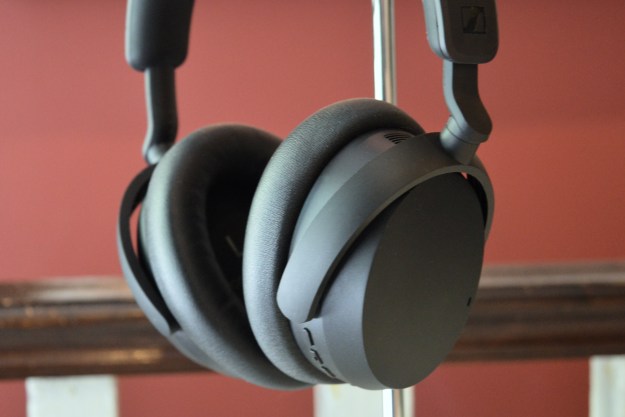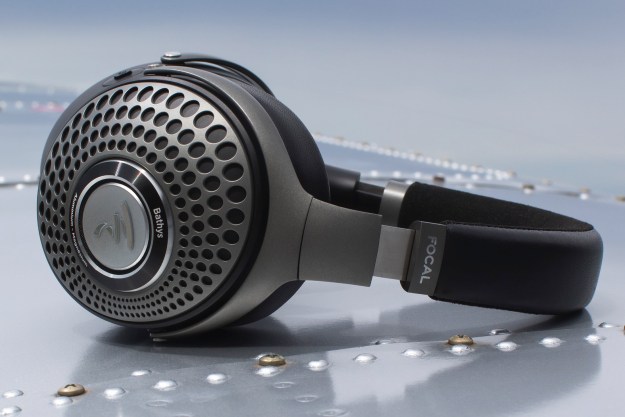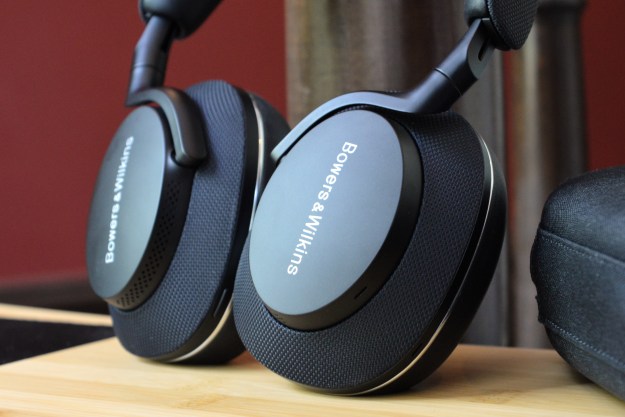
“Sennheiser's Accentum Wireless are the best-sounding noise-canceling headphones we've ever heard under $200.”
- Affordably priced
- Superb, balanced sound
- Light, comfy, and secure fit
- Very good noise cancellation
- Excellent transparency mode
- Hi-res wired/wireless audio
- Huge battery life
- Feel a bit cheap
- May be too tight on larger heads
- No analog input
- No storage case or bag
Midtier wireless headphones have to perform a three-way balancing act between features, quality, and price. Sennheiser’s philosophy has been to prioritize sound quality over features to create a budget-friendly product that doesn’t sound like a budget-friendly product — even if that means cutting down on some of the bells and whistles found in similarly priced headphones.
That philosophy is in full force with the Sennheiser’s newest midtier cans, the $180 Sennheiser Accentum Wireless. Though they look very similar to the company’s flagship $399 Momentum 4 Wireless, the Accentum are a far more bare-bones experience.
After spending a week with them, I think the result is one of the best sounding set of sub-$200 noise-canceling headphones you can buy. They should please a lot of people, as long as you’re OK with what you don’t get. What am I talking about? Let’s check them out.
Sennheiser Accentum Wireless: design

There’s no escaping the similarity between the Accentum and the Momentum 4 when it comes to design. These two wireless cans share a lot of DNA, including the sleek headband shape, the slender sliders, the distinctive angled pivot, and the minimalist earcups.
This is a departure from Sennheiser’s previous approach. The Sennheiser HD 450BT (which the Accentum replaces) looked nothing like the Momentum 4 Wireless or its predecessor, the Momentum 3 Wireless.

It makes sense that Sennheiser would want to endow the Accentum with the Momentum 4’s halo. But their physical similarity invites additional comparisons, most of which shouldn’t be made. After all, these headphones are in totally different classes. The Accentum are made from lighter, cheaper-feeling plastics. The headband sliders move with almost no resistance — and no notching — and the pivots feel almost loose. Other noise-canceling headphones in this price range, like the Edifier WH950NB and the Skullcandy Crusher ANC 2, have a more upscale feel.
In its efforts to keep costs down, Sennheiser also has sacrificed other features we’ve come to expect around the $200 mark. There’s no zippered carry case — not even a protective bag — and no analog cable. It’s not that Sennheiser wants you to buy your own analog cable — the Accentum can’t be used with analog sources at all. In the fully recyclable box, you’ll find the headphones, a 4-foot USB-A to USB-C cable that can be used for charging and audio (more on that later), and printed instructions.
Sennheiser Accentum Wireless: comfort and fit

The Accentum’s pared-down construction comes with a big upside: these headphones weigh just 7.8 ounces, making them some of the lightest over-ear wireless headphones you can buy.
To put that number into perspective, the Apple AirPods Max are almost twice as heavy at 13.6 ounces.
With excellent clamping force, the Accentum gripped my head securely, and the ear cushions’ padding distributed the pressure evenly, keeping that grip from becoming exhausting.
The earcups are smaller than any of the other headphones I have on hand at the moment, both in overall circumference and depth. You can feel it after several hours — they’re not as roomy or as airy as other models.
I can’t say for sure if everyone will like how they feel — folks with big noggins may find the pressure too much — but I found them very comfortable. Once they were on my head, I forgot all about how they felt in my hands. Any concerns I might have had about the headband adjustments or the pivots disappeared.
I don’t advocate wearing full-size wireless headphones at the gym or when running or cycling — most of these products just aren’t intended for that use. But if you’re determined to do it anyway, the Accentum are the cans to use. Along with their excellent clamping force, their low mass almost eradicates shifting due to movement and keeps you from feeling like your head is always trying to play catchup with your body. Just remember: there’s no official protection from sweat, water, or dust, so don’t be surprised if they don’t take kindly to this kind of activity.
Sennheiser Accentum: controls and connections

Sennheiser keeps things simple with the Accentum’s controls. No touch-sensitive earcups — you get four physical buttons on the right earcup, with a multifunction button for playback and call control flanked by two volume buttons. The fourth button does quadruple duty for power, noise canceling mode, voice assistant access, and Bluetooth pairing.
They’re quite small, but each button is easy to locate and use with your thumb. It might get trickier to use them with gloves on, but at least you’ll still be able to operate them, which is more than I can say for touch controls. The buttons produce an audible and tactile click when pressed — another benefit over touch controls, which don’t always register gestures accurately.

There are no wear sensors on the Accentum, so you can’t automatically pause your tunes when you remove them. But there is an auto-off timer that can be set in the app, as well as a convenient pause-on-transparency option.
Getting the Accentum paired was easy on both iOS and Android (though there’s no Google Fast Pair support, so you’ll still have to dive into your Bluetooth menu). And with Bluetooth Multipoint support, I was able to connect to a second device simultaneously.
The Sennheiser Smart Control app comes in handy here for managing your paired devices, as well as to confirm which Bluetooth codec is in use. Most Android phones support aptX HD, but it’s nice to get an at-a-glance readout to make sure your handset hasn’t defaulted over to aptX classic or AAC/SBC.
Once connected, the Bluetooth signal remained stable up to 25 feet indoors, and about double that outside. Swapping back and forth between two Multipoint devices was seamless.
Sennheiser Accentum: noise canceling and transparency modes

Sennheiser may have found places to save some money on the Accentum, but it didn’t skimp on the active noise cancellation (ANC). These cans do a very good job of blocking out unwanted sounds — both the intermittent kind like traffic, as well as constant ones like the hum of an electric motor. It’s not class-leading ANC like you’ll find on the Sony WH-1000XM5, but for the price, it’s superb. I was hard-pressed to tell the difference between the Accentum and the Momentum 4.
In its regular mode, the Accentum don’t do well with wind noise; even a gentle breeze is noticeable. However, wind noise reduction mode deals with this very effectively, albeit by reducing the overall effectiveness of the ANC. Still, it’s better to have a little less quiet and no wind noise.
I encountered a slight glitch during testing. If wind noise reduction mode is active and you use the voice assistant feature to talk to your phone’s AI, it deactivates wind noise mode for that interaction and does not turn it back on afterward. I’ve mentioned the problem to Sennheiser, and hopefully this will get fixed with a firmware update.
The big surprise is the transparency mode. Perhaps I’ve simply become accustomed to mediocre transparency from anyone but Apple, but the Accentum seem especially good at making external sounds — including your own voice — sound natural.
If there’s one downside to the Accentum’s ANC and transparency tech, it’s that you can’t turn it off, even if you open the Smart Control app. You’re either in ANC or transparency mode. This wouldn’t bother me except for the fact that when in ANC mode, with no audio playing, there’s a slight amount of background hiss. If you’re a purist who likes to ban the ANC algorithm from any potential interference it may cause with music playback, these might not be the noise-canceling headphones for you.
Sennheiser Accentum: sound quality

As I said in the introduction, the Sennheiser Accentum offer great sound. Not just great for their price, but great in general. It’s their clarity that you notice most. Many headphones have no problem boosting some frequencies (usually bass) if that’s what you want to hear, but this generally comes at the expense of poorer fidelity in other parts of the spectrum.
The Accentum manage to avoid this trap while still delivering very respectable low-end. Vocals are lively without being overly bright, and the midranges have plenty of detail. Sennheiser keeps a steady hand on the soundstage; it’s precise and open-sounding, but only wide enough to just push things a little outside your head.
Having USB audio as an option is a nice extra. But whether you really need it may come down to your chosen devices. After switching back and forth between USB audio on my Mac and Bluetooth with aptX HD on an Android phone, I’m not sure I could hear much of a difference. Doing the same test between USB audio and Bluetooth with AAC on an iPhone offered more contrast, with USB audio providing a smoother, more detailed sound. It was not, however, the step up over regular Bluetooth that I’d been hoping for.
USB audio also seems to restrict the maximum volume. When connected via Bluetooth, my ability to listen without discomfort tops out at about 85%, but when using USB audio, I can listen to the Accentum all the way at 100%.
Given that, perhaps Sennheiser should have stuck with the analog-in option instead. At least then people could opt to use their own DAC/amp for higher quality.
Sennheiser’s Smart Control app lets you create multiple custom EQ presets in addition to the ones that come prepopulated. You can modify the EQ with the five-band equalizer (with Bass Boost or Podcast modifiers) or you can use Sennheiser’s My Sound Check — a quick and easy tool that runs you through a series of A-B-C comparisons while you listen to your preferred music.
I had mixed results using them. My Sound Check seemed to just put me right back at the neutral factory tuning. The bass boost feature should be avoided; instead of boosting just the lowest frequencies, it seemed to have the opposite effect and diminished all of the other frequencies. I’m just relieved that the Accentum sound as good as they do out of the box.
Now that I’ve had a chance to audition and review multiple Sennheiser models, from the wired, open-back HD 560S and HD 660S2, to the Momentum 4 and virtually the entire range of Momentum true wireless and CX true wireless earbuds, I feel I have a handle on the company’s sound signature. I’m very confident that if you’ve ever enjoyed Sennheiser’s other products, you’ll like the Accentum too — they very much feel like they’re part of the family.
Sennheiser Accentum: call quality

When indoors, the combination of mic fidelity and a very effective sidetone adjustment make the Accentum an excellent companion for things like voice and video calls.
Outside, what you notice most is the drop in voice fidelity. Your callers will have no trouble understanding you, and external sounds are mostly held at bay, but your voice will sound thinner and distant — like you’re speaking from a couple of feet away.
In some ways this is to be expected. The Accentum only have two beamforming microphones to work with.
If outdoor calls matter a lot, both the Edifier WH950NB and Sony WH-XB910N will do a better job.
Sennheiser Accentum: battery life

After being roundly criticized for the poor battery life on the Momentum 3 Wireless headphones, Sennheiser has been wildly overcompensating, and I love it. While the Accentum can’t quite hit the astonishing 60 hours offered by the Momentum 4, at 50 hours (even with ANC on), there’s zero reason to complain. That’s well over double what Bose and Apple produce from their best wireless headphones.
Need a quick top-up? A fast-charge feature will give you an extra five hours after 10 minutes worth of charging.
The Sennheiser Accentum offer terrific value in a set of wireless, noise-canceling headphones. They nail the basics, they’re light and comfortable, and they cost under $200. I kind of wish they came with a travel case, but for fans of balanced, high-quality audio — who don’t have room in their budgets for big investments — the only way you’re going to beat the Accentum is if you find a much pricier set of cans on sale.
Editors' Recommendations
- Best wireless earbuds for 2024: Sony, Bose, Soundcore, and more
- Sennheiser Accentum Plus aims at the middle ground between budget and baller
- JBL upgrades its 2024 wireless headphones with massive battery life
- Sennheiser’s new budget-friendly headphones get a very high-end feature
- Dyson’s bonkers air-purifying headphones hit the U.S. for $949










